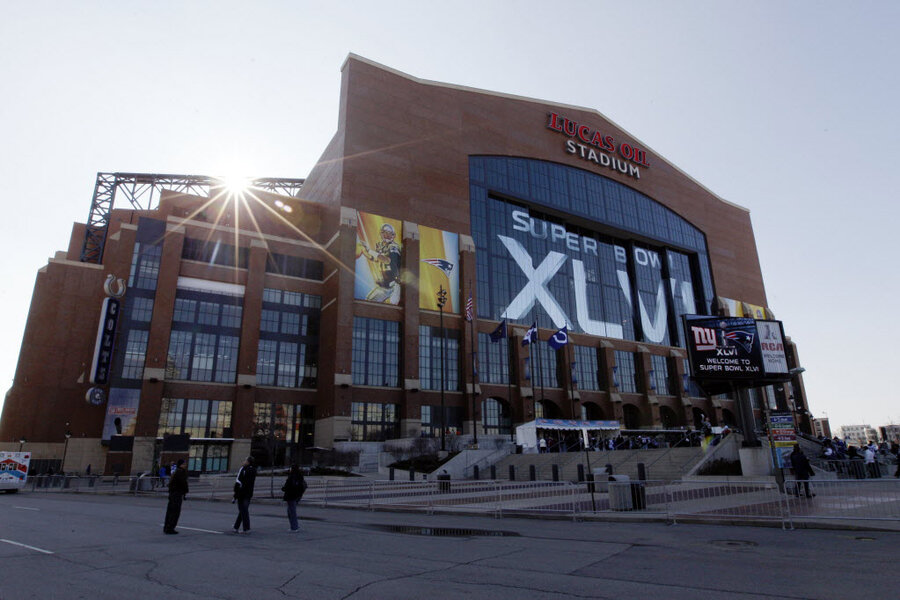Department of Homeland Security spending questioned as debt looms
Loading...
| Washington
The Homeland Security Department paid for an underwater robot in a Midwest city with no major rivers or lakes nearby, a hog catcher in rural Texas and a fish tank in a small Texas town, according to a new congressional report highlighting what it described as wasteful spending of tax money intended for counterterrorism purposes.
Sen. Tom Coburn, R-Okla., said in his 54-page report that while much of the spending for the department's Urban Area Security Initiative appeared to be allowed under the program's rules, it was still inappropriate in an age of budget austerity and as the federal government faces a $16 trillion national debt.
"Every dollar misspent in the name of security weakens our already precarious economic condition, indebts us to foreign nations, and shackles the future of our children and grandchildren," Coburn said.
The report focused on UASI spending in the last few years in Arizona, California, Colorado, Indiana, Louisiana, Minnesota, Ohio, Oklahoma and the National Capitol Region, which includes Washington and parts of Maryland and Virginia. Among the projects Coburn found questionable were:
—$21 for a fish tank in Seguin, Texas, a small town outside of San Antonio.
—$98,000 for an underwater robot in Columbus, Ohio, where there are no major rivers and few lakes nearby.
—$24,000 for a "latrine on wheels" in Fort Worth, Texas.
—A "BearCat" armored vehicle bought with a $285,933 grant in Keene, N.H., a small New England town that is home to an annual pumpkin festival that draws up to 70,000 people.
—$250,000 for security upgrades, including $9,000 in signage, at Lucas Oil Stadium in Indianapolis.
The grant program stems from the 2001 terrorist attacks when the federal government pledged to help equip local governments to prevent future attacks and respond if they occurred. DHS has pumped billions to states over the past decade under the program that puts states in control of how the money is ultimately spent.
The security program is the department's most popular grant, and guidance for how money can be spent has evolved over the years. During the past decade there have been other examples of questionable homeland security grants, including infamous snow cone machines bought by Michigan officials last year. The department has no way of tracking how the money is spent and has not produced adequate measures to gauge what states and communities actually need, Coburn said.
DHS spokesman Matt Chandler said the department "fundamentally disagrees with the report's position on the value of homeland security grants and the importance of investments in our first responders on the front lines and the development of critical capabilities at the local level."
Chandler said the department's grant programs are evolving and changes proposed by the Obama administration reflect "a more targeted approach" to how federal money will be spent in the future.
Sen. Joe Lieberman, the retiring chairman of the Senate homeland security committee, said while Coburn's report "makes some good points" the program's benefits outweigh its flaws.
"The grants, for example, have helped improve first-responder communications between different jurisdictions and levels of government — a lesson learned from the 9/11 attacks when scores of New York City fire fighters died because of poor communications," said Lieberman, I-Conn.
Congress regularly complains about the lack of accountability of the grant programs but lawmakers are happy to have the federal dollars spent in their districts. And almost from the beginning the program has operated with political considerations.
In 2004, then-DHS Secretary Tom Ridge told a congressional panel asking about allotments to various cities that he was looking for a formula that get "218 votes in the House or 51 votes in the Senate, in order to get it done."
Coburn wasn't shy about shouldering some of the blame for the program's failings.
"Any blame for problems in the UASI program ... also falls on Congress, which is often more preoccupied with the amount of money sent to its cities than with how the money is spent, or whether it was ever needed in the first place," Coburn said.
Associated Press writer Eileen Sullivan contributed to this report.







